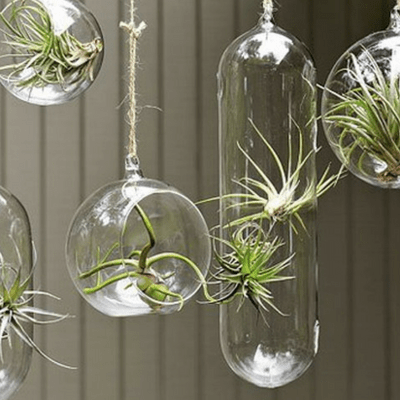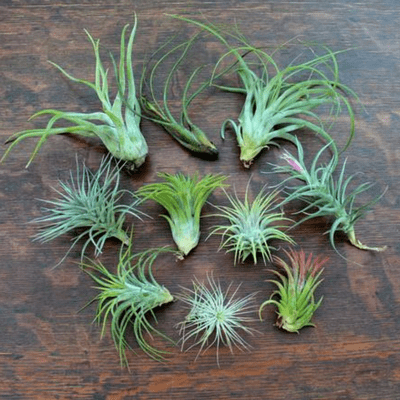What Are Air Plants & How Do You Care For Them?
A growing number of homeowners are turning to air plants as a way to beautify both inside and outside places. The plants might appear to be unusual, and they are, but as you understand their benefits, you just might decide air plants are the perfect addition to your spaces.
Air Plants Explained 
One of the first things people notice about air plants is that their leaves look and feel more substantial than on a lot of plants. They also don’t sit in the ground or in pots filled with soil, making them look almost like impossibilities.
Air plants are epiphytes – that means you don’t need to put them in potting soil of any kind. You’ll notice the roots are exposed and act like anchors that wrap and cling to objects to keep the plant from moving.
These plants are low-maintenance – many people love air plants because they don’t need to be tended as carefully as other traditional houseplants or even other hanging plants.
Air plants get water and nutrients from the air – that means you don’t water and fertilize them in the traditional sense. These plants can also survive scorching temperatures and direct sunlight for the majority of the day.
The Perfect Decoration
Because of their diverse nature, air plants are great for decorating spaces that are small. Since you can hang them from all kinds of objects, zero shelf or table space needs to be dedicated to these plants.
People have put air plants into all kinds of items:
- Wire baskets
- Glass baubles
- Pieces of driftwood
- Seashells
- In pots with other plants
You can get really creative with how to display air plants. Some people make customized crafts for this very purpose, with some getting quite ornate or complex.
Caring for Air Plants
Even if you aren’t particularly good at caring for plants, it’s pretty difficult to not have an air plant thrive. They’re tough by nature and require little care, making them ideal for a whole range of people.
Because these are tropical plants, you need to keep them warm. Air plants should always be in temperatures that are 60 degrees or warmer, otherwise, they could die. Keep them away from air conditioning vents and windows during the winter.
Select a fairly sunny spot, since air plants need the light. Windows that face east or west are best.
As for watering, the leaves of your air plant indicate how much is needed.
- Fuzzy leaves mean you can water the air plant once or twice a week.
- Smooth or glossy leaves mean the plant is from a rain forest or cloud forest, so more frequent watering is needed.
You can mist or dunk your air plant in the sink for watering, although the first method requires more frequent applications if you notice your air plant looks excessively dry, submerge it in a sink full of water for up to three hours.










